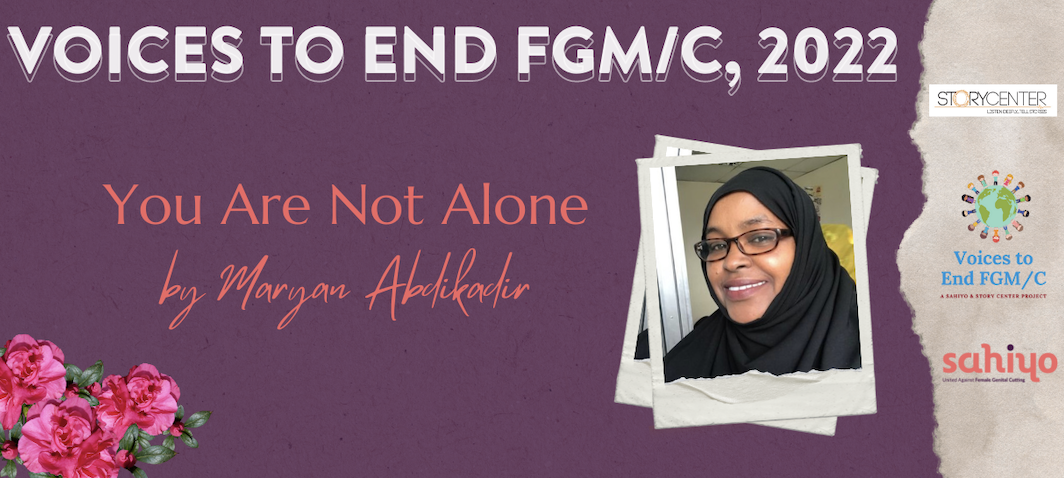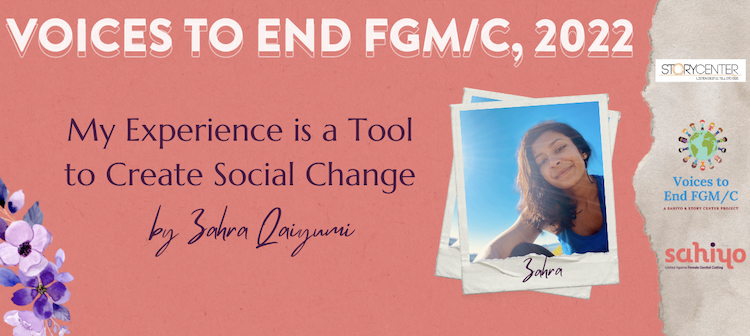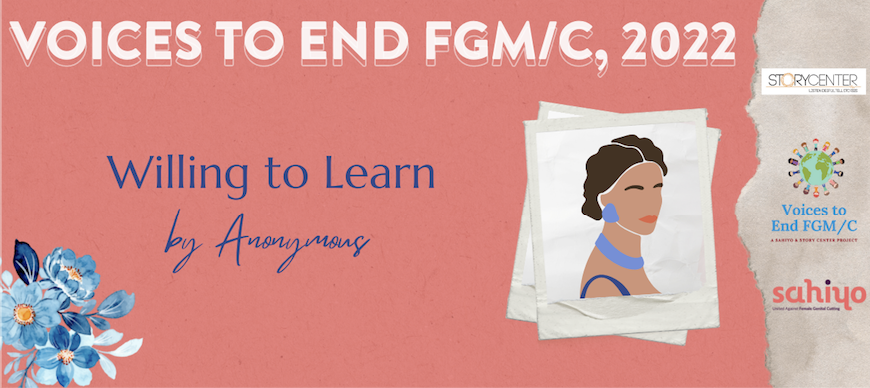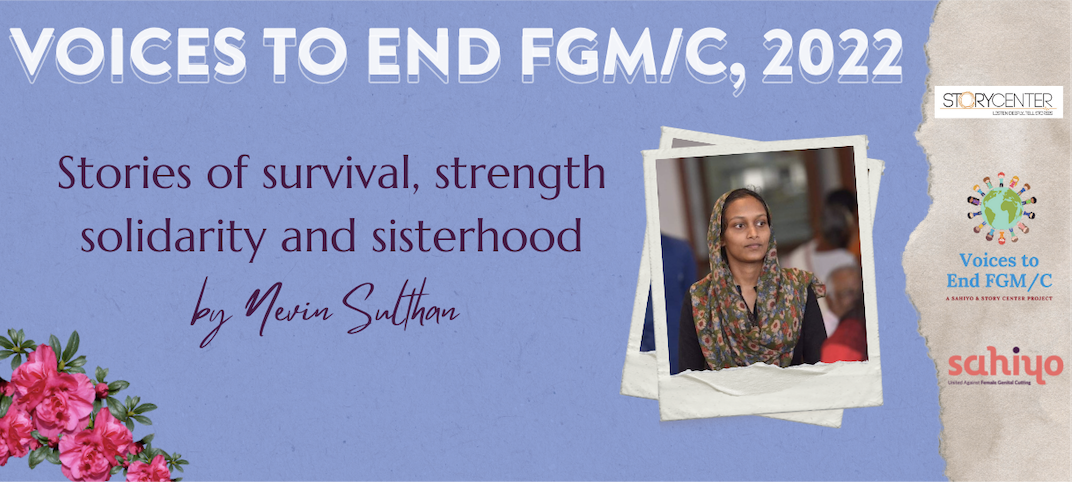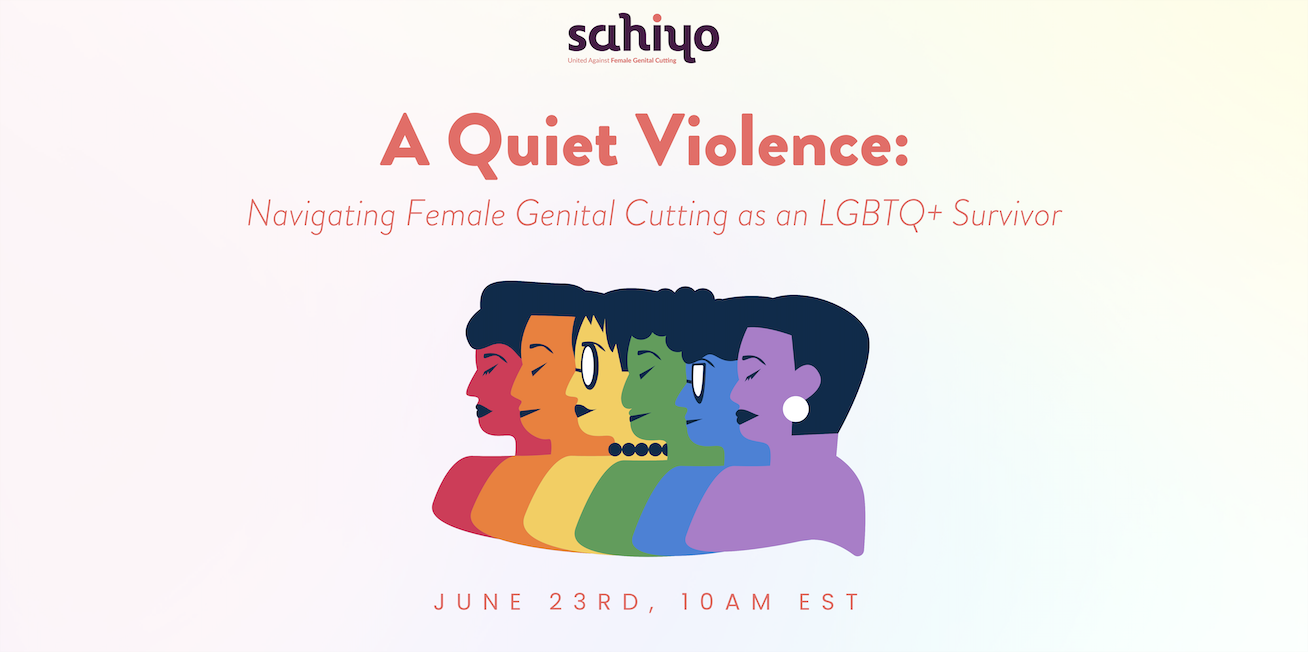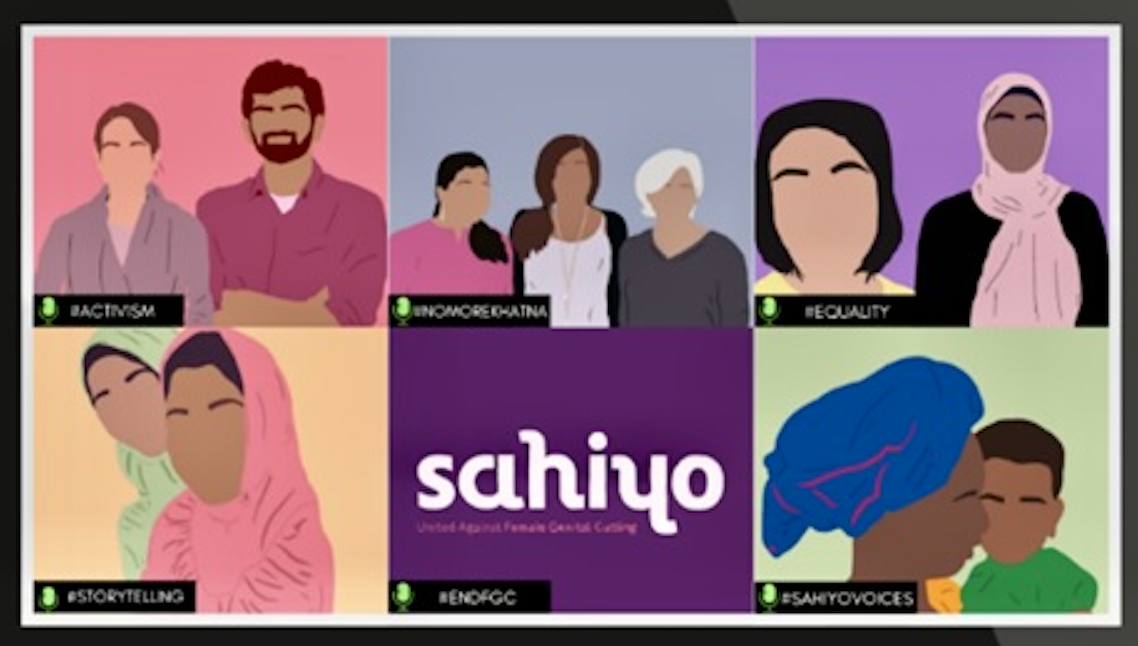By Maryan Abdikadir
Why did you want to attend the workshop and share your story?
I love storytelling and I come from a long line of storytellers and poets. I believe stories have a way of capturing the minds, leaving lasting impressions and/or education. Being a survivor of Female Genital Mutilation and an activist/educator, I know that storytelling is powerful in passing information on this otherwise painful ordeal. I have always wanted to tell my story so that I can tell another survivor “you are not alone,” and I hope by educating others, by extension I can help save their daughters. After watching a couple of Sahiyo stories, I knew I needed to be one of the storytellers. I am so grateful for the opportunity accorded to me.
What story did you choose to tell and create into a digital story?
I chose to tell the story of the verbal cut, which is very much part and parcel of this practice of Female Genital Mutilation. Over and above the physical pain of being cut is the name-calling, belittling, insulting and demeaning of the genitalia that a girl gets to know from an early age. The uncut genitalia is frowned upon in my community, and there are names to describe it. Untrue perceptions about the genitalia are believed and passed on to young girls. Where I come from, organs like the clitoris are said to grow long and dangle, making the owner get sexually aroused with the slightest touch of the thighs. It is also believed that the genitalia will smell and become odorous. The genitalia is not mentioned or named. Kintir, which is the clitoris in my language, is such an abhorrent thing to say out loud. They would use other ways to refer to it like, “the it,” “that thing,” “the woman's thing,” “the place for urinating,” or bahal (which literally means an organism). All these naming and shaming make girls hate their bodies. I faced it and so did so many others. I could not watch as my daughter was subjected to the same. Words are powerful and sharp just like the razor used, and thus the reason I called this story the verbal cut.
What have you learned or most enjoyed during the workshop and by meeting others who shared their stories?
I learnt so many things. One of the biggest take homes was how our stories are made up of so many different pieces, and how powerful every piece is. At first I was skeptical about telling a story in 3 minutes. I knew I had an ocean of a story, and how I could tell that in so few minutes was looking impossible. In less than 400 words, they said, making it sound unattainable. But as I listened to the facilitators and past stories, I chose what I wanted to tell and indeed, it was possible. That little piece I picked is a full story on its own.
I also learnt how to do editing and weaving a story together. I am one of the most nontech savvy people around, but I still enjoyed and learnt this skill.
Meeting other survivors and listening to their stories, I felt at ease as I told mine. I knew I was in a safe space. I could see myself in each and every story told by others, young enough to be my daughters. I saw the younger me in most of them.
I learnt that it takes courage to tell your story as a survivor and every day is different. I learnt that our bodies never forget the trauma and have a way of bringing it up every time we talk about our ordeal. And that each person’s journey is very personal. I now know that even though I am not afraid to tell my story of FGM, my body is because of how sick I became.
What kind of impact would you like your story to have?
My story will paint the hurtful words that are as lethal as the physical pain of Female Genital Mutilation. I have also told my personal struggle to save my daughter and I am hopeful that it can give courage to another mother who wants to save her own daughter. My story shows the struggles I endured and the decisions I had to make, which I also hope can inspire others to tell their story. Every story is different and unique, yet the same as the next one. Mine is similar to many, but also different and unique. I want people to appreciate the fact that it is a real struggle to save even one girl, but that saving one girl is as important as saving many. Every girl counts.
By telling my story I am adding my voice to the growing discourse on Female Genital Mutilation, a much needed venture especially here in North America. I am hopeful other survivors will be able to come up and add their voice so as to get the services they so deserve. It is through such stories that we can even inform policy.
Is there anything in your digital story that you would like to share?
My story is a reflection of my struggles. I was scared at one time that my daughter may be cut behind my back. It shows that fear is real and must never be ignored. When my mum asked me what I would do if my daughter was cut, I took it as a wake up call. I could not take that lying down. My daughter’s concerns about what was being said to her was real and I had to act on it. My story says: every concern is important, every fear is valid, and never disregard your gut feeling as concerns the safety of the next girl.
Maryan Abdikadir is a survivor and an independent activist against female genital mutilation. Maryan Is the co-author of “Delinking Female Genital Mutilation/Cutting from Islam” and the “A Religious Oriented Approach to Addressing FGM/C among the Somali Community of Wajir, Kenya”. Maryan is involved in end FGM agenda and uses her personal story to educate many. She has undertaken FGM abandonment programs (community dialogues, religious scholars engagement, research, documentation, working on policy and legal framework), and she participated in the drafting of the Prohibition of FGM Bill in Kenya. Maryan holds two Masters; one in Anthropology from Memorial University, Newfoundland and Labrador, Canada and another Masters in Development Studies from the University of Nairobi, Kenya. Maryan is a Co-Chair of the board of End FGM Canada Network.

